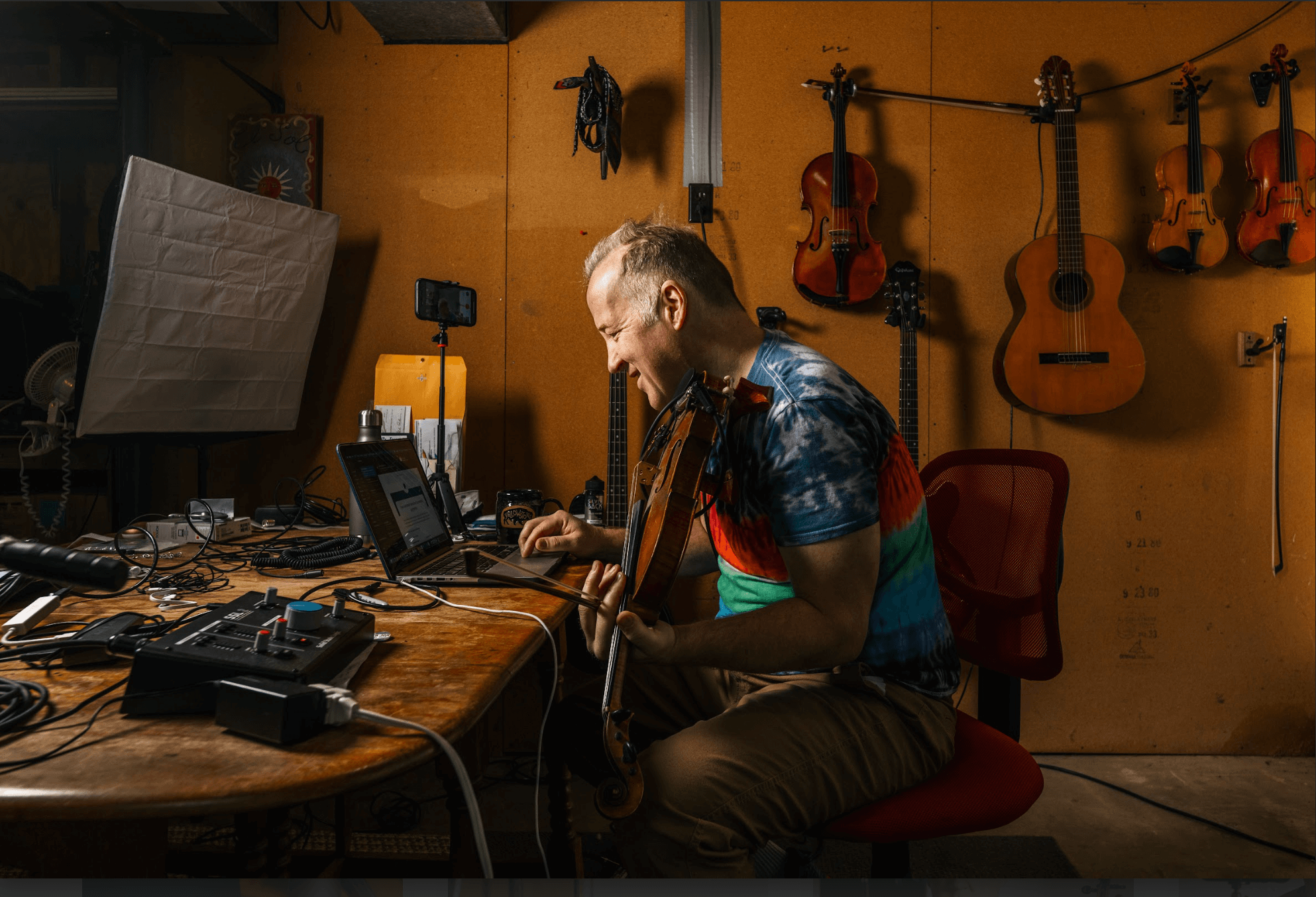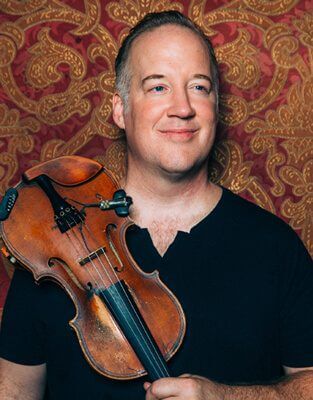Chopping, strumming, and other techniques for the bow and plucking hand are popular among string players, but rather than focusing on the mechanics of one technique, I’m more interested in helping you take a broader approach to creating your own rhythmic accompaniment. (Scroll down to watch the video.)
Many students and teachers ask me to teach them some specific groovy/funky thing to do, but learning one rhythmic pattern will only serve you in very limited musical situations, and furthermore, learning “a technique” or “a lick”, is just like studying classical music, and you’ve already got plenty of that on your plate, right? For balance, you need strategies which will enable you to think for yourself to discover things that haven’t been dictated down note for note. In the video below, I’m demonstrating a process for subdividing rhythm physically with your arm, whether strumming or playing arco at the tip or the frog. I hope this approach will help you as much or more than any specific technique (like “the chop”!). After you check out the video, by all means let me know what you think in the comments below!
Incidentally, one of the most important aspects of accompaniment for any bowed string player should be knowing when NOT to play, and different instrumentations require different approaches to accompaniment. For example, I would almost never use a “chopping” technique while playing with a drummer, since the drummer is already covering the percussive role. Often, even without a drummer or percussionist, a minimal use of percussive effects on the violin, viola, or cello is more tasteful.

(For lots more instructional material, check out the shop or the Creative Strings Academy).
Another reason to play less is that it’s so important when playing a percussive or rhythmic role to be playing exact rhythms. Oftentimes, string players have the luxury in classical music settings to develop a lazy rhythmic sense, playing with a constant give and take of the pulse. Groove-based music requires a higher standard of rhythmic precision, so if you’re a classical player you should retrain yourself to approach these scenarios differently. Oh, and by the way, much of classical music is dance music. If you focus on learning how to groove, you’ll make people want to dance when you play Gavottes, Allegrettos, Rondos, Andantes, etc., and that would be a good thing :)
Chopping and strumming on the violin can be cool, but the coolest thing is always to “never do harm” to the music. So by all means, practice these techniques with a metronome and listen back to yourself to notice and improve your rhythm. In the meantime, on stage, heed the wisdom of jazz musicians and “when in doubt, lay out”.







